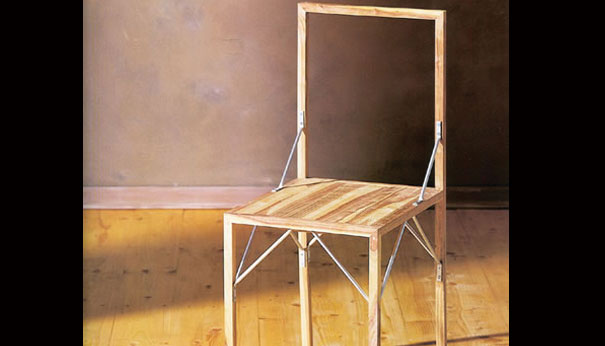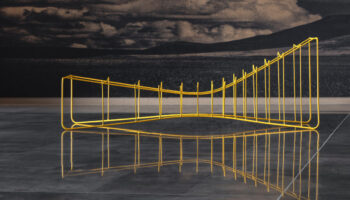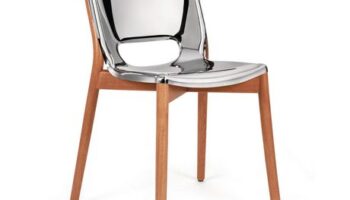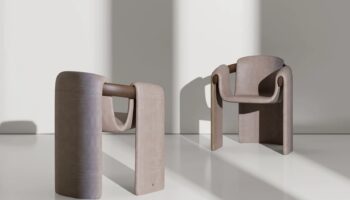Janez Suhadolc’s Chair Lajt
Consider yourselves lucky, 3rings readers, because this post constitutes a couple of firsts for the site: 1. First featured Slovenian designer; and 2. First use of the term, “ekphrastic.” Number 1 is none other than Janez Suhadolc, architect and graphic designer; Full Professor of freehand drawing at the University of Ljubljana; 50-year aficionado of the “hardiness and inexorability of flat wooden seats”; and-not least among his attributes-sometime carpenter to the pope. Number 2 is defined as art created in response to other art.
Chair Lajt. Designed by Janez Suhadolc.
Both are relevant to Suhadolc’s new chair, the deceptively simple solid wood and metal-braced minimalist furnishing made of plum wood and known as “Chair Lajt,” or the “Light Chair.” The name is certainly self-explanatory. Suhadolc set out to create a piece that could support the weight of a full-grown human person but would itself weigh mere ounces (light enough to easily float on the tip of any adult index finger). Janez certainly has the background to achieve such aspirations. One of five Suhadolcs whose lives are inextricably bound-up with the wonders of wood (his father was a construction engineer, two of his brothers are artists, and one is an architect), the medium has been at the center of his creative artistry for at least two decades. And he shows a particular affinity for chairs. Lamenting that modern sensibilities have been “spoiled from the cozy upholstered furniture,” Suhadolc seems to have molded his disdain into a life’s work-at least count 87 exceptionally artistic yet eminently functional chairs.

Much of his work, including the Light Chair, is currently on display in Slovenia at the KoroÅ¡ka Gallery of Fine Arts, a bit of information that gets me back to where I started. A principal aim of Suhadolc’s exhibit is to place art and furniture in dialogue with one another. Thus the exhibition space features his chairs in immediate proximity to other chair-themed art (drawings, paintings, sculpture, and other furnishings). This arrangement forces attendees to examine one with respect to the other, to achieve the kinds of observations and comparisons that are difficult to make in traditional exhibition or museum settings. And Suhadolc-one part artist, one part artisan, and one part provocateur-certainly seems to prefer it that way: “Showing groups of exhibits closely together is a little disconcerting; it makes us feel like a part of the setting itself. We discover details-shapes, structures, color and its meanings… the [chair] exhibits suddenly lose their functional meaning and can be as readable as the paintings.”
Via Chairblog




Leave a Reply